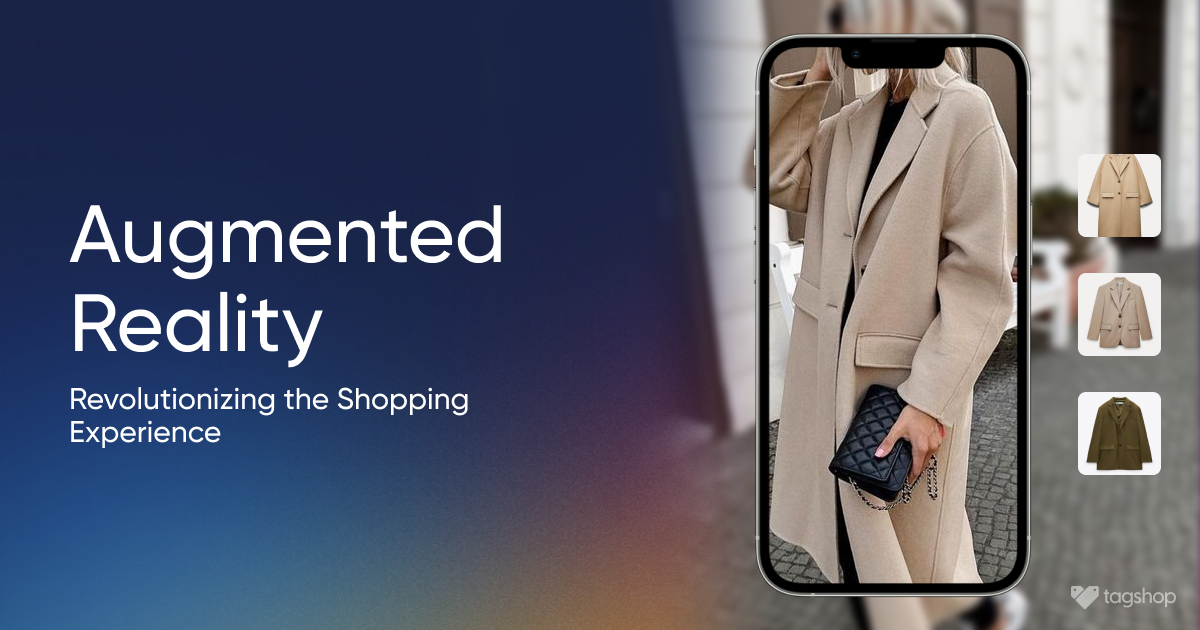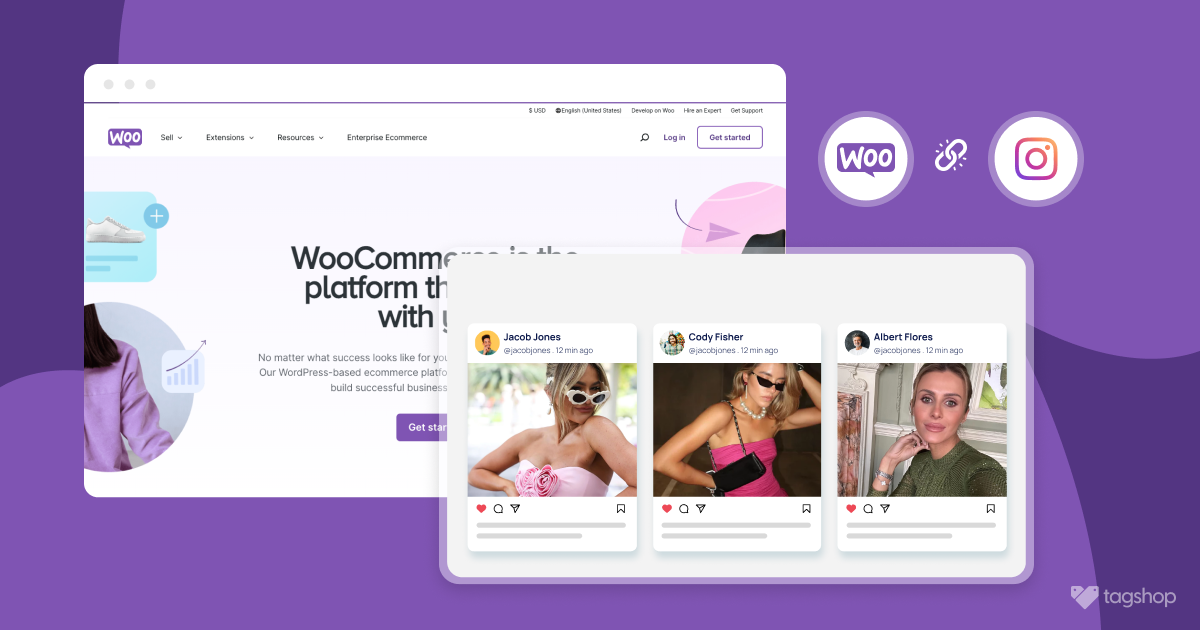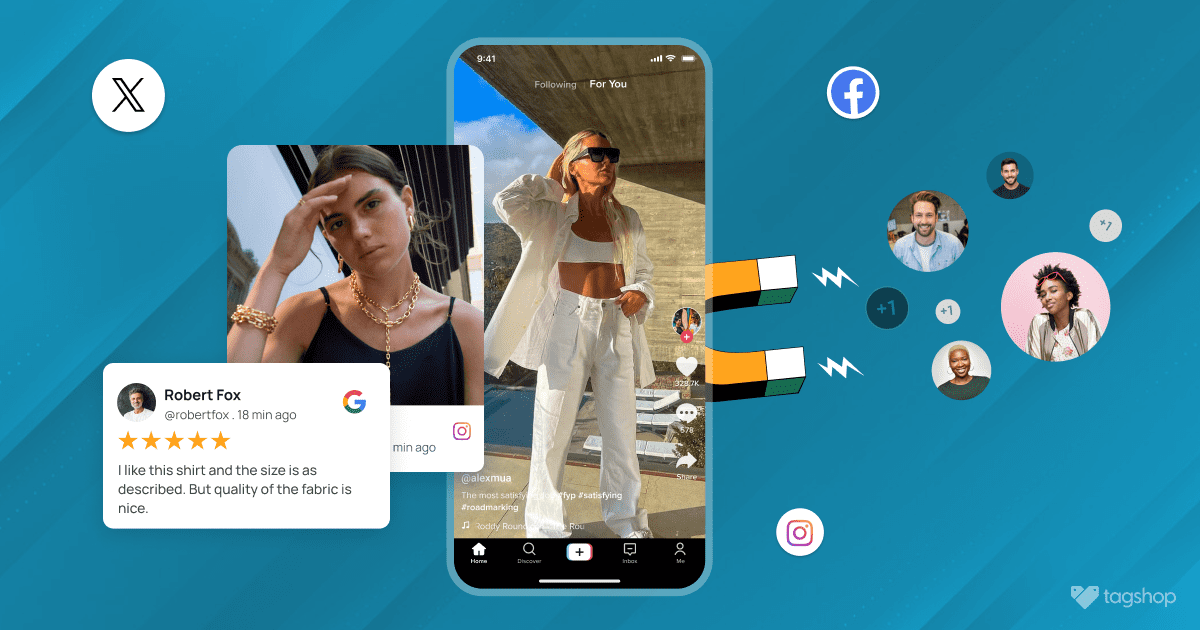AR in eCommerce: Revolutionizing the Shopping Experience
When we think back in time, our idea of futuristic inventions was always flying cars and robots. The basic idea was always less work for us and more convenience. However, we often forget that innovations like augmented reality, especially AR in eCommerce, were also considered futuristic innovations that we are actually experiencing today.
According to research, AR produces 200% more engagement than non-AR equivalents. This high engagement rate results from users finding the concept immersive, useful, and original.
Augmented reality shopping empowers businesses to break the barriers of online shopping and provide customers with a way to experience their offerings authentically.
With AR, businesses are revolutionizing how customers perceive them, establishing trust and quality. But before we move forward, let’s learn the definition of augmented reality.
What is Augmented Reality?

Augmented reality is an interactive feature that blends real-time environment or imagery with graphics, sounds, or other digital elements. AR offers a way to enhance the visual experience for users in a unique and immersive way.
AR applications can be experienced through various devices, including smartphones, tablets, smart glasses, and headsets. These devices use sensors, cameras, and other technologies to capture real-world visuals and augment it with artificially generated content.
This feature has already become mainstream in various industries such as events, real estate, automobiles, and gaming and is now moving towards capturing the augmented reality shopping and e-commerce businesses on Instagram.
Let’s understand how:
How Is AR Transforming the E-commerce Landscape On Instagram?
Instagram is not just a social media platform anymore. It is also an e-commerce platform that is effectively and successfully allowing brands to sell their products seamlessly, exactly how they would sell their products on an e-commerce website. And in this endeavor, Augmented Reality is helping e-commerce businesses to transform their user experience.
1. Virtual Try-Ons
Augmented reality is a great way to turn shopping experiences interactive. It can enable customers to virtually try on products before making a purchase. This form of AR is particularly prevalent in the fashion and beauty industries, where users can use AR applications to see how clothing, accessories, or makeup will look on them in real time.
2. AR Product Launches
Being solely established online, many at times, e-commerce businesses are unable to scale their new additions and product launches effectively. With Augmented Reality in the picture, brands can promote products in a creative and engaging way using AR effects. These effects can be shared in Stories, creating a more interactive and personalized connection with the audience.
3. Enhanced Product Visualization
AR features on Instagram contribute to enhanced product discovery. Users can discover new products and brands through interactive and visually appealing AR experiences, making the shopping process more enjoyable and engaging.
4. AR Advertising
AR in advertising on Instagram is another way augmented reality is transforming e-commerce. This can include interactive features that allow users to engage with products in a more immersive way. For example, users might be able to see different color options for a product or interact with a 3D model.
These integrations prove how AR is transforming the e-commerce experience for brands and consumers alike, by bridging the gap between online and in-store shopping and providing more interactive ways for customers to explore and interact with products before making purchase decisions.
Current Innovations Shaping The AR Industry
As we know, Augmented Reality integrates graphical and artificial elements into a real-like environment. This feature is supported by applicants like MAR (Mobile Augmented Reality) and glass AR concepts. Let’s learn more about which key innovations and concepts are defining the AR industry.
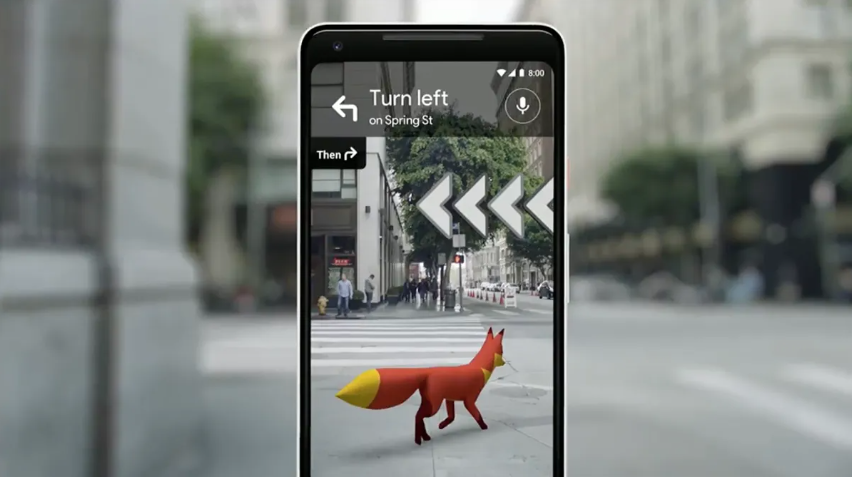
Image Source: CNET
1. AR Maps
One commonly used AR concept is AR Maps. This integration involves the combination of augmented reality into mapping and navigation applications. Brands can enhance users’ experience by providing a better overlay of information on a real-world map. This integration offers enhanced navigation guidance, points of interest, and location-based information.
2. Virtual Product Try-Ons
Virtual Product Try-Ons use AR to enable users to try on or visualize products virtually before making a purchase. This is a common concept in the fashion and beauty industries, allowing users to see how clothing, accessories, or makeup will look on them in real time.
3. Gaming
Augmented reality has also spread itself into gaming and related industries. It involves the integration of augmented reality into gaming experiences. Games like Pokémon GO use AR to place virtual elements, such as creatures or objects, in the player’s real-world environment, creating an interactive and immersive gaming experience.
4. AR Planetariums
AR Planetariums use augmented reality to provide interactive and educational experiences related to astronomy. Users can use these apps to explore and learn about celestial bodies by pointing their devices at the sky, with digital information overlaid on the real-world view.
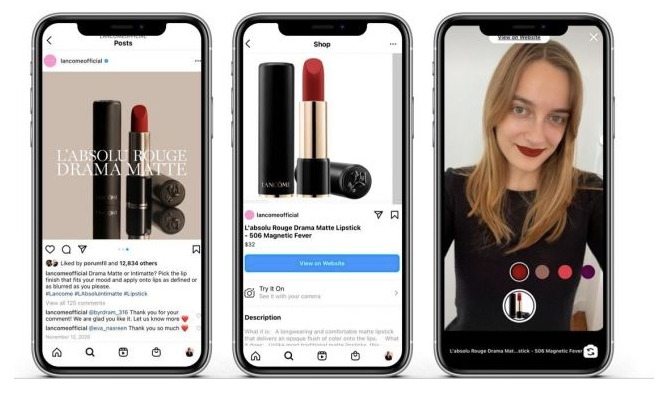
Image Source: Fashion Network
5. AR Effects On Social Media
AR Effects on Social Media refer to the use of augmented reality in creating interactive posts, reels, or stories on social media platforms using AR filters. Users can apply AR-generated filters, effects, and animations to their photos and videos, enhancing their content and making it more shareable.
These concepts are unique and provide users with fun and engaging ways to use regular applications. Be it maps, online shopping, or social media platforms, we use these features regularly to make our day-to-day activities more convenient. By integrating AR features, brands can improve their users’ experience even more.
What Are The Major Differences Between AR and VR?
We have learned in detail about augmented reality and how it enhances industries. However, the confusion between Augmented Reality (AR) and Virtual Reality (VR) is quite common. Understanding their differences can help clarify their distinct applications and experiences. Let’s delve deeper into each aspect:
Augmented Reality
- Enhances user experience by integrating artificially generated graphical and visual elements into the real-world environment by overlaying digital information on it. Users experience a blended view of the real-life and digital worlds, maintaining a connection with their surroundings.
- Allows users to interact with both real and virtual elements simultaneously. The added graphics or digital content is relevant to the real-world imagery.
- AR is more accessible and can be experienced through smartphones, tablets, or digital displays. It can be a part of websites’ interface, applications, and more.
- It offers limited immersiveness as it is merely an addition to existing imagery.
Virtual Reality
- Creates an immersive, artificially-generated environment that completely replaces the real world. Users are teleported to a virtual space, entirely isolated from the physical environment.
- Users interact exclusively with the artificially generated virtual environment and objects within it, without any connection to the real world.
- Requires specialized hardware like VR headsets, which typically include opaque screens, motion controllers, and sometimes external sensors for tracking.
- Virtual reality offers complete detachment from the real world and allows users to teleport to a different reality altogether.
While VR gives a more fulfilling experience in terms of visuals, AR is the superior choice of e-commerce brands. Statistics suggest that the AR market is 70% more likely to surpass the VR market in revenues.
By understanding these distinctions, individuals can make informed choices based on the intended use, desired level of immersion, and interaction with the real world.
Definition of Shoppable AR Content & Future Trends
Shoppable AR is a unique feature that allows users to create a shoppable gallery from content that is enhanced by AR elements. The primary goal of shoppable AR is to seamlessly integrate e-commerce functionalities into augmented reality experiences, allowing users to make purchase decisions in a more engaging and visually dynamic manner.
Here are some possible future trends for AR in eCommerce:
1. Shoppable Emails
A new augmented reality shopping trend has emerged in which businesses can integrate shoppable content collected from social media into emails. Users can make the content more immersive by adding AR effects to the content, making shoppable emails more action-centric. These actions may include “Try-On” buttons where brands can send targeted emails to users showcasing products customers have previously shown interest in and letting them experience them through AR.

2. Shoppable UGC Gallery
Another ongoing e-commerce trend is integrating shoppable UGC galleries into e-commerce website landing pages. With AR, users can utilize the enhancements of augmented reality and the authenticity of user-generated content to provide customers with a seamless, confident, and engaging shopping experience. This integration of augmented reality shopping can allow users to experience products more realistically.
3. Shoppable Social Media
Shoppable social media is also a unique functionality that allows users to create a shoppable gallery of social media and activate it directly within the platforms. With AR in the picture, users can browse, discover, and purchase products in a seamless and convenient way with virtual try-ons, 360-degree product visualization, etc.
What are the possibilities for AR In eCommerce On Instagram?
The possibilities for AR in eCommerce on Instagram are expected to further elevate the online shopping experience. By seamlessly integrating AR elements with the social media platform’s own features, Instagram is likely to witness an expansion of e-commerce brands and customers.
Features like AR try-on experiences and improved product visualization allow users to virtually try on a broader range of products, including clothing, accessories, and beauty products. This helps customers to trust the brands more so they can make purchases quicker and with more confidence.
As AR technology continues to evolve, Instagram’s e-commerce landscape may see advancements in personalized AR recommendations, utilizing machine learning algorithms to analyze user preferences and behaviors for more accurate product suggestions.
The seamless integration of AR with Instagram’s shopping features could become more intuitive, offering users a fluid transition from product discovery to purchase within the app. These trends collectively suggest a future where AR on Instagram plays a pivotal role in shaping a visually dynamic, interactive, and personalized e-commerce experience, fostering increased user engagement and driving online sales.
Conclusion
Augmented reality has indeed been making waves in completely changing the shopping experience, and bringing about a new way of how consumers interact with brands and make purchasing decisions.
The integration of AR in eCommerce has not only provided practical benefits for consumers but also opened up new avenues for retailers to differentiate themselves, increase customer engagement, and stay ahead in an increasingly competitive market.
As technology continues to advance, augmented reality shopping will grow even further, and we can expect even more innovative applications of AR in reshaping the future of retail.
